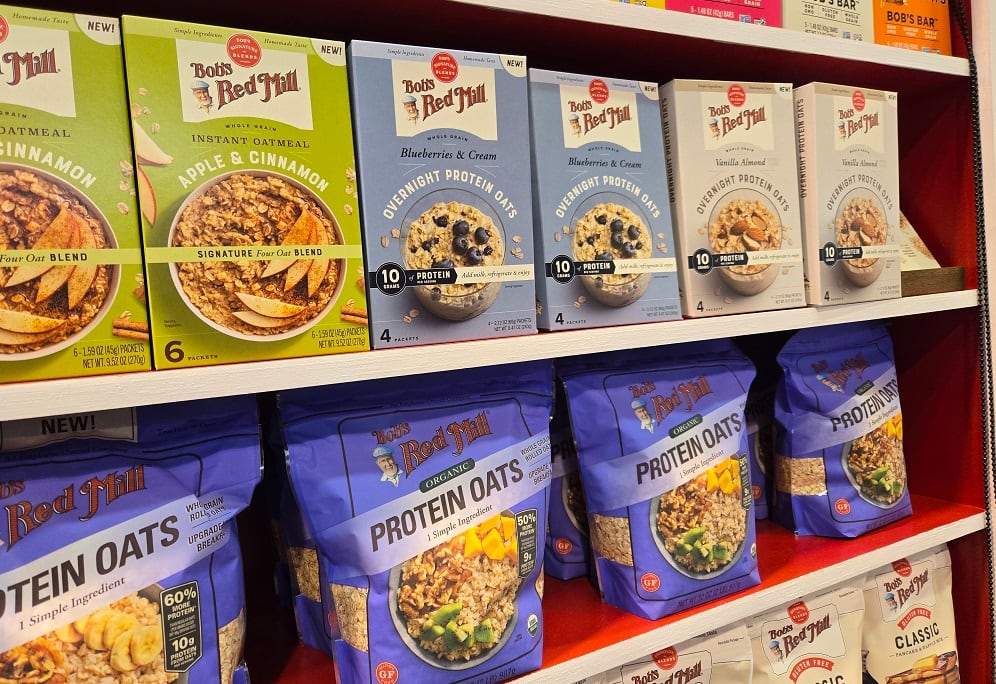While medications like Ozempic and Wegovy are delivering positive weight loss outcomes, many consumers only use them for a relatively short period, giving better-for-you brands and retailers an opportunity to stand out, according to new insights from Acosta Group’s GLP-1 Shopper Community study.
The study, conducted 4,489 of US adults (including 332 currently taking a GLP-1 and 151 no longer on the medication) found that most individuals taking GLP-1s for weight loss do not expect to stay on them long-term. Nearly 70% of current users have been on the medication for less than two years, and more than half plan to discontinue use in less than two more years, according to the study. Among those who had already stopped taking the drug, 90% reported they had only been on it for under a year.
Despite this relatively short duration, many consumers retain the healthy behaviors adopted during their time on the medication, Kathy Risch, SVP, shopper insights and thought leadership at Acosta Group said.
“It was particularly interesting to learn what lasting impacts a GLP-1 medication may have on consumers – they continue to try to maintain those healthy eating habits even as the ‘food noise’ returns,” she said.
According to the study, 76% of those who discontinued use are now eating the same amount or less, and many continue to prioritize hydration and nutrient-rich foods.
Barriers to long-term use
While satisfaction with GLP-1 medications is high – 84% of users say they are satisfied with the weight loss results – key barriers to continued use are side effects and cost.
The majority of users report experiencing side effects, with nausea and upset stomach most commonly mentioned. For 36%, these side effects are mild, but 17% describe them as more severe. Among Gen Z respondents, that number climbs to 33%, according to the study.
Affordability is another major hurdle. Nearly one-third of users say the price of GLP-1 medications is a deterrent, particularly for younger consumers. Among those who have stopped taking the medication, 46% say they would consider returning to it in the future. For both Gen Z and Gen X, 47% indicate they would restart if the cost was lower or if the medication was covered by insurance.
Impact on shopper behavior
Even when discontinued, GLP-1 medications appear to have a lasting impact on consumer behavior.
According to the study, 95% of users positively changed their dietary habits, including eating smaller portions, drinking more water and choosing healthier foods overall. This behavioral shift is reflected in purchase patterns, with consumers gravitating toward fresh produce, lean proteins like chicken, unsweetened waters and seltzers, protein bars and yogurt.
Another study by Dillet et al found that GLP-1 users reduce consumption of processed foods, refined grains, beef and sodas.
Functional foods are gaining particular traction, according to Acosta Group’s report. Consumers show strong interest in items that are fortified with vitamins and nutrients, high in protein or support gut health – attributes increasingly important as consumers try to maintain weight loss after stopping medication, per Acosta Group.
Managing side effects and nutritional gaps
Consumers are actively seeking online and in-store products to manage GLP-1-related side effects and nutritional gaps. The study found that 85% of those experiencing side effects purchase products for support.
Energy drinks, powder, and supplements are particularly popular among younger demographics. More than half of GLP-1 Gen Z respondents and nearly 40% of Millennials are buying energy drinks or powders, while 69% of Millennials and 59% of Gen Z are purchasing vitamins or nutritional supplements, according to the study.
These purchases suggest an emerging need for better product placement, more targeted messaging and a more supportive retail environment – especially as more consumers turn to GLP-1s and similar medications in their wellness journeys, according to Acosta Group.
Strategic opportunities for brands and retailers
While GLP-1 use may be temporary, the mindset shift is likely long-term. Consumers who start their weight loss journey with these medications are developing new habits and looking for products to support them, per the report.
“As use of this medication is extended and expanded for weight loss and other health advocacy, there is an opportunity to do much more, including product development, packaging, online and in-store merchandising, education and promotion,” Jami McDermid, president of CROSSMARK Sales Agency, a division of Acosta Group, explained.
Strategic responses may include designing product packaging to clearly call out benefits related to weight management, protein content and other high-interest claims, per the report. Brands and retailers also have the opportunity to build better digital experiences, from smarter search filters to educational content that speaks directly to the needs of this consumer segment.




